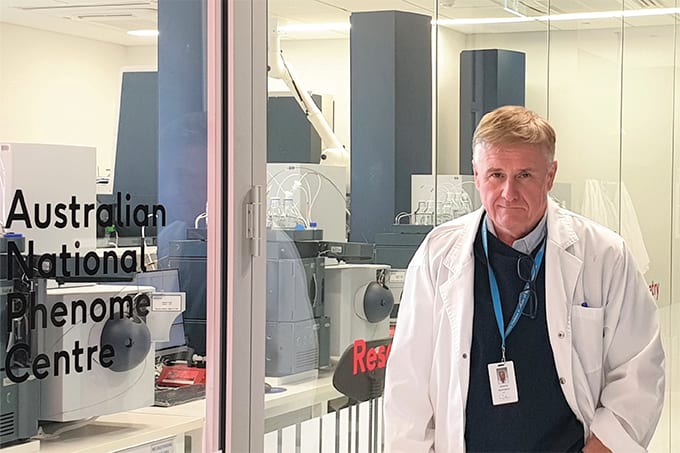
Almost 10 years ago, we heard from three pioneers of precision medicine about the drive for faster diagnostics and better-informed treatment decisions. Now, Jeremy Nicholson rejoins us to discuss where phenomic medicine stands a decade later – and where this evolving field is heading next.
How has the field of metabolic phenotyping evolved over the past decade?
The field of metabolic phenotyping has grown rapidly, with thousands of labs worldwide performing studies to inform and enhance diagnostics and prognostics for the future. This growth is encouraging but has also introduced variability in scientific quality. Our work primarily uses NMR spectroscopy and chromatography coupled with mass spectrometry on accessible samples like urine and plasma to find molecular signatures linked to disease risks or patient subgroups. This area shows promise, though large-scale applications are still emerging.
The basic principle we work with involves identifying key metabolites that can predict disease, including those influenced by the microbiome, which adds complexity due to interactions with our genetics and diet. Each person’s metabolism is unique and changes over time, making statistical analysis challenging yet crucial for understanding longevity and quality of life. The world has become a more complex place over the last decade, but the value proposition for large scale metabolic phenotyping is now greater than ever.
What is Jeremy Nicholson doing now?
As well as being Emeritus Professor at Imperial College London, I’ve served as Professor of Medicine and Director of the Australian National Phenome Centre (ANPC) in Perth, Australia, since 2019. The ANPC is part of a network of laboratories, called the International Phenome Centre Network, which I helped establish. This network uses standardized equipment, protocols, and informatics to harmonize clinical research globally – a key step for translating new technologies into medical practice. At the ANPC, we focus on population studies, disease prevention, and personalized treatments.
The iKnife was a groundbreaking tool in metabolic diagnostics when it was first developed. How has its role in real-time diagnostics for surgery advanced in clinical practice over the years? And are there any updates on its integration into more routine surgical procedures?
Imperial College remains the hub for developing iKnife real-time mass spectrometry technology, which has seen several advancements to improve its efficiency for surgical use. Although my recent focus has shifted towards preventive medicine, we’ve made significant progress in optimizing care for burns patients, particularly in minimizing healthy tissue removal, through collaboration with Fiona Wood at the University of Western Australia. Wood now has the first public iKnife system in an Australian operating theater. We also have an iKnife in our research lab to develop surgical models. This technology, along with the iEndoscope, holds great promise for the future.
In your 2015 article, you mentioned the importance of collaboration between physical scientists and clinicians. Have you seen this interdisciplinary approach gain broader adoption in clinical research?
This largely depends on the institution, researchers, and the research philosophy of each group. Unfortunately, it's still quite rare and less common than it should be. The UK offers unique advantages, especially through the NHS and NIHR, which support the translation of scientific innovation into clinical practice. Imperial College London exemplifies this approach, with world-class research and medical capabilities, but other institutions also need the resources, funding, and vision to make it work. I believe clinical science will eventually adopt life-saving innovations; however, the spread of new practices can take time due to practical limitations.
Reflecting on your early goals for stratified and personalized medicine, where do you think the field has succeeded? And what challenges remain for integrating precision medicine into everyday clinical workflows?
Though new high-performance AI approaches make things technically easier over time, personalized healthcare for entire populations is still a distant goal, likely achievable only for rare diseases. For common diseases, which involve complex interactions of genes, environment, and behaviors, the focus should be on prevention – a key objective at the Australian National Phenome Centre (ANPC).
Science should benefit all of humanity – not just those in wealthy areas. Unfortunately, current omics technologies are costly and require extensive data analysis, which delays results. ANPC’s approach is to rigorously discover and validate new disease markers, then simplify analytics so they are understandable, fast, affordable, and clinically useful for physicians – essential for real-world impact.
What role do you foresee for newer technologies, such as AI and machine learning, in enhancing the capabilities of personalized medicine?
The scope of AI is vast, but the concept isn’t new. We published papers on using pattern recognition in NMR spectroscopic diagnostics back in the 1980s, which would now be called AI. Computers have simply become faster and cheaper, making it easier to handle large clinical datasets.
The challenge with AI is that it requires massive data to yield insights, which then need to be applied on an individual level for decision-making. Success depends heavily on the quality and relevance of the data. If the question or dataset is off, it’s not artificial intelligence but “artificial stupidity” – and there’s already plenty of that around!
As personalized medicine continues to evolve, what advice would you offer to pathologists and clinical laboratory staff looking to incorporate advanced phenotyping and precision diagnostics into their practices?
Get involved! Translational advances require pathologists to engage with scientific experts, whether local or remote, like us at ANPC. We currently have over 100 worldwide collaborations and are always open to new challenges. Molecular phenotyping can tackle almost any biomedical issue, given appropriate and well-designed sampling. We believe the future is in phenomic medicine, which integrates the full complexity of human biology from genes to environment. One of the quickest, most cost-effective, and informative ways to understand this complexity is through an individual’s metabolic phenotype.




